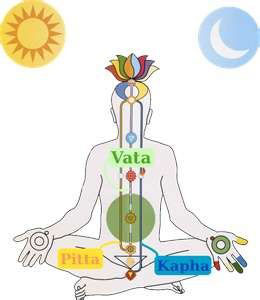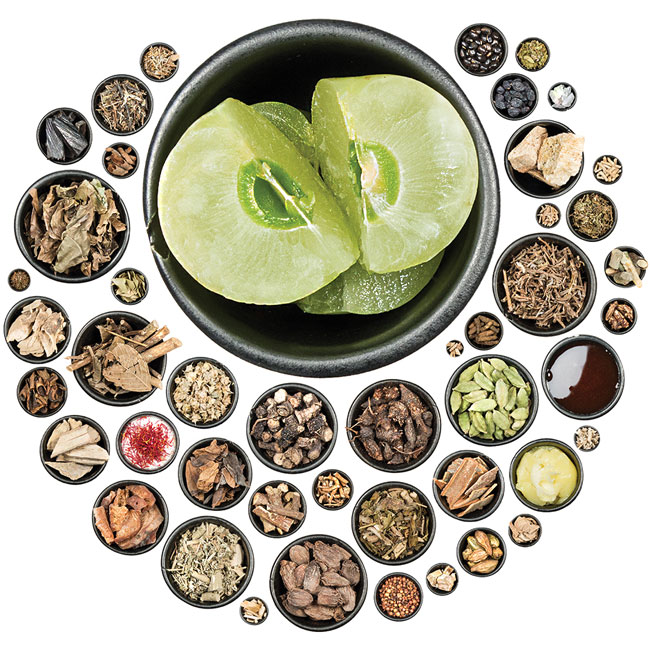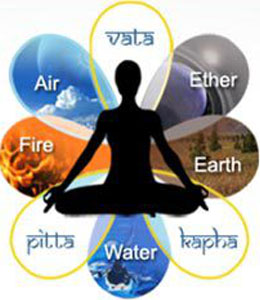Ayurveda is considered as one of the oldest of the traditional systems of medicine, 5000 years ago accepted worldwide. Ayurveda is an ancient system of life (Ayur) knowledge (Veda) arising in India thousands of years ago. Ayurveda theory evolved from a deep understanding of creation. The great rishis or seers of ancient India came to understand creation through deep meditation and other spiritual practices. The rishis sought to reveal the deepest truths of human physiology and health. They observed the fundamentals of life, organized them into an elaborate system, and compiled India’s philosophical and spiritual texts, called Veda of knowledge.
Ayurveda was first recorded in the Veda, the world’s oldest existing literature. The three most important Veda texts containing the original and complete knowledge of Ayurveda, believed to be over 1200 years old, is still in use today. These Ayurvedic teachings were customarily passed on orally from teacher to student for over 1000 years. The wisdom of Ayurveda is recorded in Sanskrit, the ancient language of India that reflects the philosophy behind Ayurveda and the depth within it.
The philosophy of Ayurveda teaches a series of conceptual systems characterized by balance and disorder, health and disease. Disease/health results from the interconnectedness between the self, personality, and everything that occurs in the mental, emotional, and spiritual being. To be healthy, harmony must exist between the purpose for healing, thoughts, feelings and physical action.
Ayurveda is a careful integration of six important Indian philosophical systems, many physical/behavioral sciences, and the medical arts. One verse from an ancient authority says Ayurveda deals with what is good life and bad life, happiness and misery, that which supports or destroys, and the measurement of life. It works to heal the sick, to maintain health in the healthy, and to prevent disease in order to promote quality of life and long life. Health is defined as an experience of bliss/happiness in the soul, mind, and senses and balance of the body’s three governing principles, seven tissues, three wastes, digestion, and other processes such as immune functioning. Health is not the absence of symptoms. Ayurveda has objective ways to assess each of these, pulse assessment being the primary means.
Its central tenet is that life is a combination of body, mind, senses, and spirit (more than a mind-body system). Nothing exists but for the pre-existence of and working of a Supreme Intelligence/Consciousness – an elemental, all-powerful, all-pervading spirit-energy that expresses Itself through and in the creation. Ayurveda seeks to know this aspect of life, the subjective (internal) as well as the objective (outer).
It is central to Ayurveda that the functioning of all creation, the mineral, plant and animal kingdoms, can be understood as the interactions of three fundamental energy complexes (erroneously called doshas).
The three energies are Vata, Pitta and Kapha – signifying the dynamic or mobile, energetic, nonmaterial aspect of nature; the transformative, intelligence aspect; and the structural, physical aspect respectively. Vata governs respiration, circulation, elimination, locomotion, movement, speech, creativity, enthusiasm, and the entire nervous system. Pitta governs transformations such as digestion and metabolism, vision, complexion, body temperature, courage, cheerfulness, intellection and discrimination. Kapha governs growth (anabolic processes), lubrication, fluid secretions, binding, potency, patience, heaviness, fluid balance, compassion, and understanding in the organism. All have physical expressions in the body.
In the human physiology these three energies tend to interact in a harmonious and compensatory way to govern and sustain life. Their relative expression in an individual implies a unique ratio of functioning of these governing principles according to each person’s unique DNA (Vata-Pitta-Kapha ratio) determined at conception. This is body or constitutional typing, called prakruti. There are seven types – Vata type, Pitta type, Kapha type and combinations thereof.

Prakruti yields two important understandings. A person has a permanent or stable nature for the entire life and efforts to maintain or change physiology must keep this balance point in mind. In addition each type will suggest an area tending to go out of balance, a disease tendency, requiring lifelong attention to maintain balance. A Vata type naturally tends to constipation, arthritis, anxiety; a Pitta type tends towards inflammations, infections, ulcers; and Kapha types tend to overweight, diabetes, congestive disorders, etc. The implication of pakruti is that it helps explain why people react differently to the same things. The medical implication for this is that certain people will have a natural predisposition or sensitivity to certain medicines and this can be predicted.
Why does imbalance occur? It occurs because one or more of the energies or elements described above gets increased quantitatively or altered qualitatively. There is no human experience, whether a thought, an emotion, the climate, food, lifestyle, etc. that does not have at least one of the twenty qualities which, by its action, yields an effect in the physiology.

Classically, the nature of the causative factors is the result of mistakes of intellection (failure to perceive things as they are), inappropriate use of the sense organs, and mistakes of time (doing even proper things at the wrong time). While DNA gives the body one set of instructions, the life experiences at every moment are giving the governing principles perhaps another message. Since these three governing principles are nothing but energy themselves, they can be influenced –increased or decreased – by like or opposite energies. Heat increases Pitta, dryness increases Vata, and liquid increases Kapha, etc. Thus imbalance is the continued experience of some stimulus – mental, emotional, or physical, real or imagined – that overwhelms the body’s ability to maintain its identity, its prakruti or Vata-Pitta-kahpa ratio. When a stimulus and a system have the same energy the stimulus promotes more of its value in the system. Like increases like which can lead to imbalance even though they are not necessarily unhealthy influences in themselves – properly cooked organic food when taken in excess or at the wrong time promotes imbalance. With time and chronicity and some defective space in the organism (from genes, prior disease, trauma, congenital defect, etc.), disease can develop and manifest in the weak organ or tissue. When disease begins to manifest the governing principles are called doshas, meaning impurities, which can pollute or contaminate the physiology.
The concept of Panchamahabhuta (Five elements) is the foundation of Ayurveda to understand its physiology (normal functioning), pathology (disease formation) & pharmacokinetics (movement of drug within the body) .
Ayurveda believes that everything in this universe is made up of five basic elements. These five elements are earth (prithvi), water (jal), fire (Agni or tej), air (Vayu) and ether or space (akash) and collectively they are termed as Panchmahabhuta.
These are the minutest elements, which constitute living and non-living matters. Every thing, including drugs, herbs and living beings are made of these basic elements. Every matter contains all of these five elements. Depending on the predominance of the content, the matter is classified as Parthiva, Apya, Taijasa, Vayaviya and Akashiya( With predominance of earth, water, fire, air and space respectively). The permutation and combination of these elements and its quantity in a given matter determines its properties.
Ayurveda understands body, mind and spirit likewise. It divides the constitution of people into three categories—Vata (ether/air), Pitta (fire) and Kapha (water/earth). These are three basic energies or life forces that are the biological deriVataives of the five elements and they govern all the function and structure of the body or its existence as a whole.
Ether (Akash) is not synonymous with the sky. It can be something similar to Space. All the body channels, pores or empty spaces symbolizes Ether or space.
Air is the gaseous form of matter which is mobile and dynamic. Conceptually anything that moves or transported does so because of this Mahabhuta. In living beings this Mahabhuta is a major constituent of Vata dosha which is responsible for movements like that of motor or sensory nerve impulses, food through G.I.T, movements of the joints etc. Vayu or air follows Akash in the hierarchy of creation.
Fire possess power to transform the state of any substance. In living beings, Agni Mahabhoota is the major constituent of biological humor Pitta dosha. It is responsible for biotransformation. This Agni provides the energy required for all activities in our body. Energy can neither be created nor destroyed, but it can be converted from one form to another. We derive energy from the food we eat. Biological Agni transforms the energy in the food to the energy, which can be utilized by our cells. The vitamins, minerals, carbohydrates, fats etc. we consume, are biotransformed by this Agni to the substances that can be utilized by our body. All the activities in body are performed smoothly as long as this Agni is in balance. Any disturbance in this Agni causes imbalance in the homeostasis and disturbs functioning. Ayurvedic therapeutics is entirely based on this concept of Agni. The branch of Ayurveda which deals in internal medicine and treatment is known as “Kaya chikitsa”,where Kaya means Agni and Chikitsa means treatment. Ayurvedic therapeutics focuses on rectification and maintenance of biological Agni.
Water symbolizes the liquid state. Our blood, lymph, and other fluids bringing energy, carrying away wastes, regulating temperature, bringing disease fighters, and carrying hormones from one area to another.

Evolution of Aapamahabhoota follows that of Agnimahabhuta. Sense of taste (Rasa) is its chief sense attribute and liquidity (DraVatawa) is the main property. Apa Mahabhuta is the main constituent of the biological humor Kapha dosha. This Mahabhuta brings and keeps things together. Conceptually all biological and chemical are feasible because of this Mahabhuta
Earth represents the solid state of matter. It symbolizes stability, permanence and rigidity. In our body, the parts such as bones, teeth, cells and tissue indicate earth element. The last in the series to evolveis Prithvi Mahabhuta. Sense of smell (Gandha) is its main sense attribute and Roughness (Kharatwa) is its basic property.
These five elements are the basic building blocks of matter. They are combined in an infinite variety of relative proportions such that each form of matter is unique. Each element has a variety of attributes, only some get apparent in a particular situations.




